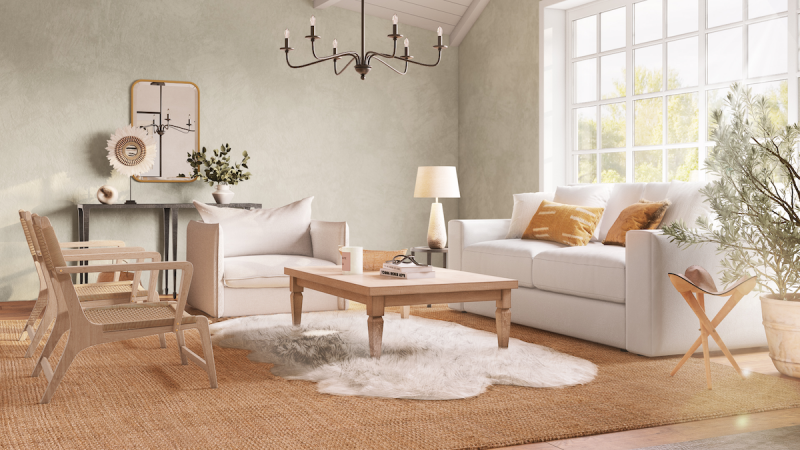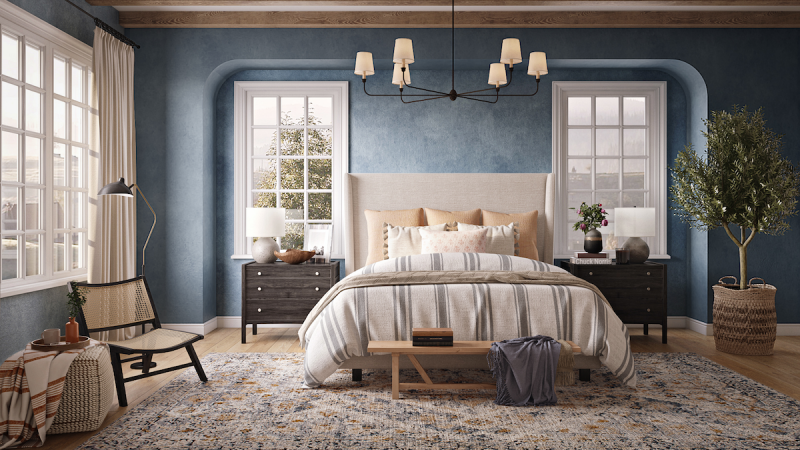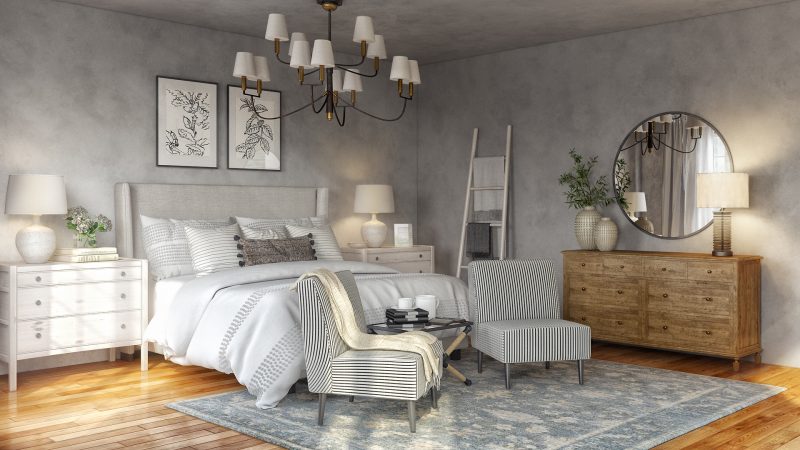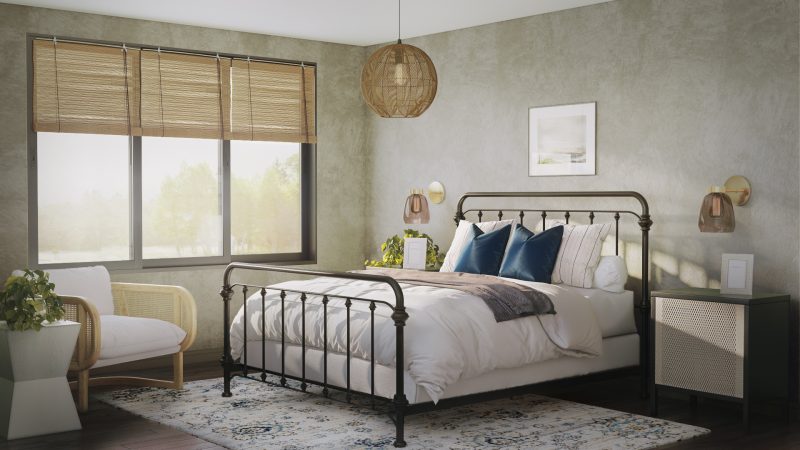If you’ve ever watched an episode of Fixer Upper, you’re familiar with shiplap. The wood paneling that was originally used to waterproof exteriors was re-popularized as an interior wall feature when Joanna Gaines started using it on the home renovation show in the early 2010s. At one point, shiplap was the hottest wall design trend in existence.
While shiplap is still beloved by many (no shame to the shiplap fans!), there’s a new wall trend in town called limewash and you’ve probably already seen it on Instagram. Those ethereal textured walls that look like they belong in a Mediterranean spa? That’s limewash, and we’re officially calling it: it’s here to stay.

What's limewash, and why is it everywhere?
Though limewash has been having a moment recently, it’s anything but new. In fact, it’s an ancient paint technique that dates back to Roman times, which explains why it reminds us of romantic Italian architecture. Made of crushed limestone that’s been burned and mixed with water to form a paste, limewash is a classic style in revival. Much like relaxed fitting jeans.
In its original form, limewash is off-white, with a matte, chalky feel that adds depth to walls. These days, paint companies add natural pigments to the substance so that homeowners can use this earthy product in their desired hues. But dreamy aesthetics aren’t the only reason people love limewash.

Thanks to its old-world origins, limewash is perhaps the most sustainable and environmentally friendly treatment you can apply to your walls. It’s non-toxic and contains zero solvents or VOCs. It’s also said to be hypoallergenic and antimicrobial, which we can totally get behind.
If those perks aren’t enough to convince you, limewash is also incredibly durable for both indoor and outdoor use. It binds easily to surfaces, soaking in rather than sitting on top like regular paint, so porous materials like stone, plaster, and brick pair flawlessly with limewash. But if you want to put limewash on drywall, that works too, as long as you have the right mineral-based primer.

How can I get the look?
Limewash is much more attainable than it might seem. Many paint companies sell cans of limewash, which you can easily DIY because the final look is intended to be organic and imperfect. All you need is a wide, long-haired paintbrush to allow for larger strokes and some patience because experts recommend about three coats, each of which must completely dry before the next is applied. Remember, too, that limewash gets drastically lighter as it dries, so don’t be alarmed if the color is a lot deeper than what you expected when it first goes on.

If you want our opinion, you can’t go wrong with a neutral limewash. From sandy beige to French grey, soothing tones match the historic essence of limewash and add those Wabi Sabi feels (which we love so much). On the other hand, we also love a bolder, darker limewash. If you’re drawn to midnight blues and moody sages, we encourage you to go for it. For a totally immersive ambiance, you can even limewash the ceiling.

Once you’ve got your limewash, the style options are limitless. From traditional and farmhouse to minimalist and California cool, limewash only enhances the decor with a romantic, timeless quality, especially if you’re into natural materials like reclaimed wood, jute, and linen. There’s truly nothing this trend can’t do.

The skim version
For those of you who love a good list, we’ve rounded up our short and sweet design considerations for a lovely limewash makeover. Take notes, and happy painting.
- We love a good neutral limewash -— whether in sandy tones or French grays — for a soft, romantic, Wabi Sabi vibe.
- But don’t be afraid to limewash in color! Go for bold and dark hues like deep blues and moody sages, or keep it softer with a vintage green or even blush.
- YES, you can even limewash the ceiling for a more immersive ambiance.
- Works across a variety of styles from classic and farmhouse, to more minimalist and modern, and even a little Cali Cool.
- Make sure to bring in lots of natural texture (reclaimed woods, jutes, linens, etc) to complement the raw limewash aesthetic.

